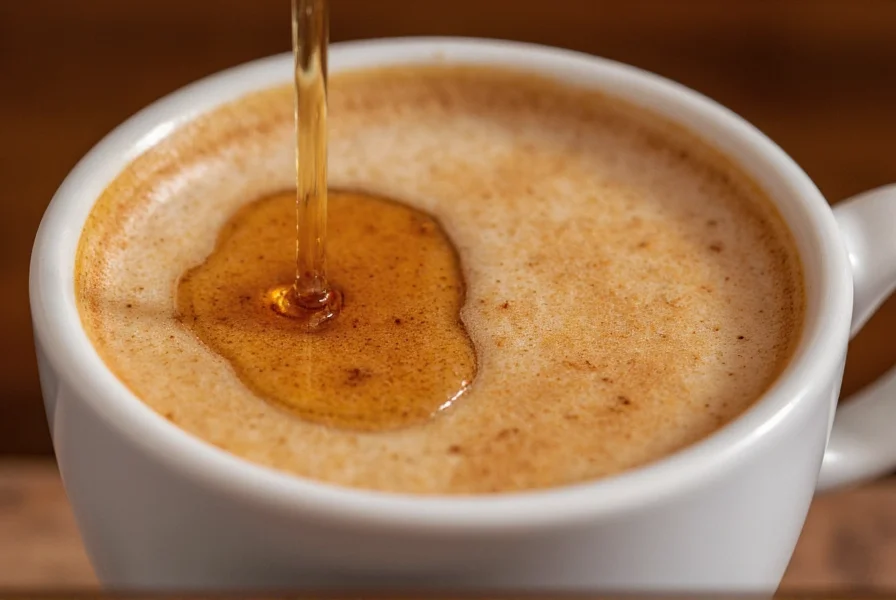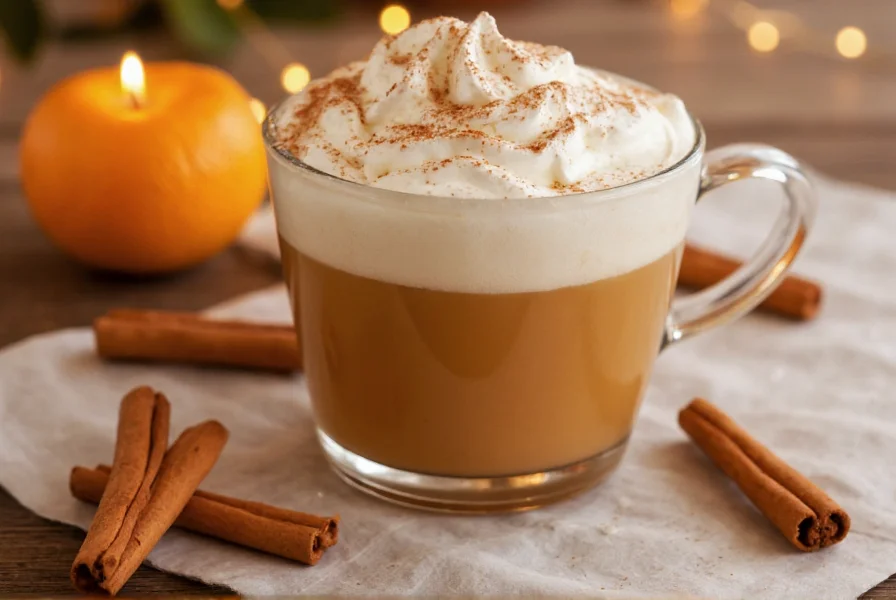If you're searching for a comforting coffee drink that balances natural sweetness with warming spices, the honey cinnamon latte delivers exactly that. Unlike conventional flavored lattes loaded with processed sugars and artificial ingredients, this version uses honey as a natural sweetener and cinnamon for its distinctive aromatic spice. The combination creates a sophisticated beverage perfect for fall mornings or whenever you need a cozy coffee experience.
The Essential Honey Cinnamon Latte Recipe
Creating an authentic honey cinnamon latte at home requires just five simple ingredients and takes less than 10 minutes. The key to exceptional flavor lies in using quality components and proper technique.
| Ingredient | Standard Measurement | Adjustment Tips |
|---|---|---|
| Espresso | 2 shots (60ml) | Use freshly pulled shots for best flavor |
| Milk | 180ml whole milk | Oat milk works well for dairy-free version |
| Honey | 1-2 tablespoons | Adjust to taste; raw honey preserves more benefits |
| Cinnamon | 1/4 teaspoon ground | Freshly grated offers superior flavor |
| Vanilla extract | 1/4 teaspoon (optional) | Enhances overall flavor complexity |
Step-by-Step Preparation Guide
Follow these professional barista techniques to craft the perfect honey cinnamon latte every time:
- Brew two shots of espresso directly into your serving cup
- Add honey and cinnamon to the hot espresso, stirring until fully dissolved
- Steam milk to 140-150°F (60-65°C), creating microfoam for optimal texture
- Pour steamed milk over the espresso mixture in a steady stream
- Sprinkle additional cinnamon on top for presentation and aroma
Why Honey Outperforms Sugar in Cinnamon Lattes
Understanding the honey vs sugar in cinnamon latte comparison reveals significant advantages. Honey contains trace enzymes, antioxidants, and minerals absent in refined sugar. When added to hot espresso, honey's complex flavor profile complements rather than overpowers the coffee's natural characteristics.
Research shows that honey maintains some antioxidant properties even when heated, though temperatures above 140°F (60°C) begin to degrade certain beneficial compounds. For maximum benefit, add honey to your espresso immediately after brewing when the temperature has slightly decreased but remains hot enough to dissolve the honey completely.
Creating the Perfect Dairy-Free Honey Cinnamon Latte
For those seeking a dairy-free honey cinnamon latte, plant-based milks offer excellent alternatives. Oat milk provides the creamiest texture and neutral flavor that works beautifully with honey and cinnamon. When preparing dairy-free versions:
- Choose barista-style plant milks specifically formulated for steaming
- Avoid adding honey to extremely hot plant milk, which can cause separation
- Consider using cinnamon syrup instead of ground cinnamon for better integration
- Try adding a pinch of cardamom to enhance the spice profile
Health Considerations of Your Honey Cinnamon Beverage
While exploring the health benefits of honey cinnamon latte, it's important to maintain realistic expectations. Both honey and cinnamon offer potential wellness properties, but they don't transform your latte into a health supplement.
Cinnamon contains cinnamaldehyde, which may support healthy blood sugar levels when consumed in moderate amounts. Honey provides small amounts of antioxidants and has antimicrobial properties. However, both ingredients still contribute calories and carbohydrates to your beverage. A standard 16-ounce honey cinnamon latte contains approximately 250-300 calories, depending on milk choice and honey quantity.
Seasonal Variations: Iced Honey Cinnamon Latte
During warmer months, try this refreshing how to make iced honey cinnamon latte variation:
- Brew espresso and immediately mix with honey and cinnamon while hot
- Pour mixture over ice to rapidly cool while preserving flavor
- Add chilled milk (about 1:1 ratio with espresso)
- Shake gently or stir to combine
- Garnish with a cinnamon stick instead of powder to prevent sinking
This method prevents the honey from settling at the bottom, which commonly happens when adding honey to cold beverages.
Common Honey Cinnamon Latte Mistakes to Avoid
Even experienced home baristas make these critical errors when preparing honey cinnamon latte without espresso or with traditional methods:
- Adding honey to boiling milk - Causes honey to lose beneficial properties and develop bitter notes
- Using too much cinnamon - Overpowers coffee flavor and creates unpleasant texture
- Skipping the espresso bloom - Failing to dissolve honey in hot espresso first leads to uneven sweetness
- Using low-quality honey - Processed honey lacks flavor complexity and potential benefits
Selecting Ingredients for Optimal Flavor
The best cinnamon for honey latte comes down to personal preference and availability. Ceylon cinnamon (often called "true cinnamon") offers a more delicate, complex flavor with less intensity than the more common Cassia cinnamon. Ceylon contains significantly lower levels of coumarin, a compound that can be problematic in large quantities.
For honey, raw, unfiltered varieties maintain more natural enzymes and flavor compounds. Local honey supports regional beekeepers and may help with seasonal allergies, though scientific evidence for this benefit remains limited. Always choose honey that specifies its floral source for the most distinctive flavor profile in your latte.
Historical Context of Spiced Honey Beverages
The tradition of combining honey and spices with warm beverages dates back centuries. Ancient Egyptians, Greeks, and Romans all enjoyed honey-sweetened spiced drinks, though coffee wasn't introduced to Europe until the 16th century. The modern honey cinnamon latte represents a contemporary interpretation of these historical preparations, adapted for today's coffee culture.
Unlike commercial flavored syrups that emerged in the 1990s coffee boom, the honey cinnamon combination offers a simpler, more natural approach to flavored coffee beverages that connects us to historical drinking traditions while meeting modern preferences for less processed ingredients.
Perfecting Your Home Brewing Technique
Mastering the homemade honey cinnamon latte recipe requires attention to temperature control and ingredient sequencing. The optimal drinking temperature for coffee beverages ranges between 135-145°F (57-63°C). Exceeding 160°F (71°C) can scald your tongue and degrade delicate flavor compounds in both the coffee and honey.
For consistent results, consider investing in an inexpensive thermometer to monitor your milk temperature. The ideal steaming temperature for milk is 140-150°F (60-65°C) - hot enough to create proper texture but not so hot that it destroys the honey's beneficial properties when added.












 浙公网安备
33010002000092号
浙公网安备
33010002000092号 浙B2-20120091-4
浙B2-20120091-4